This post lists the best Night Light alternatives for Windows PC. Night Light is a Windows feature that reduces the amount of blue light produced by a system’s display. Blue light causes eye discomfort and disrupts sleep patterns. So Night Light shifts the display colors to warmer tones to minimize the impact of bright light browsing during night hours.
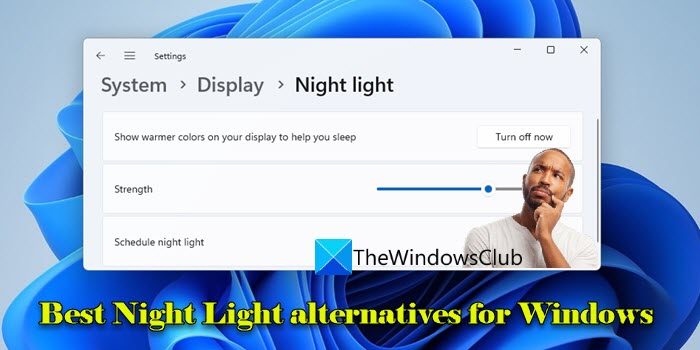
Windows’ Night Light is a pretty simple feature. You can turn it on, schedule it to activate during night hours, and adjust its strength to fit your needs. However, if you want more control over the night light filter or if Windows Night Light is not working, read on.
Best Night Light alternatives for Windows PC
Here are some of the best Night Light alternatives for Windows you may try:
- f.lux
- Eye Saver
- ScreenTemperature
- LightBulb
Let us have a detailed look at them.
1] f.lux
f.lux is a lightweight Night Light alternative that automatically warms your PC screen in low-light conditions. It aims to minimize blue light exposure during the evening and night hours that may impact your circadian rhythm and make it harder for you to fall asleep.
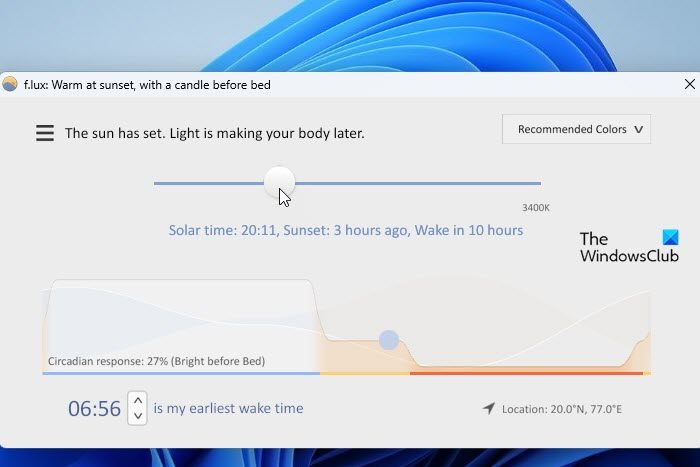
f.lux uses your geographical location to determine the time of sunrise and sunset in your area. It then uses this information to display cooler colors on your screen during daylight hours and shifts the color temperature to reddish tones as the evening progresses. It allows you to finetune the degree of color temperature and the transition timing. Once configured, it runs in the background to automatically adjust your screen colors throughout the day. To download f.lux, visit the Microsoft Sstore or justgetflux.com.
2] Eye Saver
Eye Saver is an eye protection software that filters out the harmful blue light emitted by your monitor screen. It reduces the light emitted in the blue spectrum and switches the color temperature to warmer tones. It also helps prevent eye strain and headaches by eliminating the invisible flickering of the display backlight.
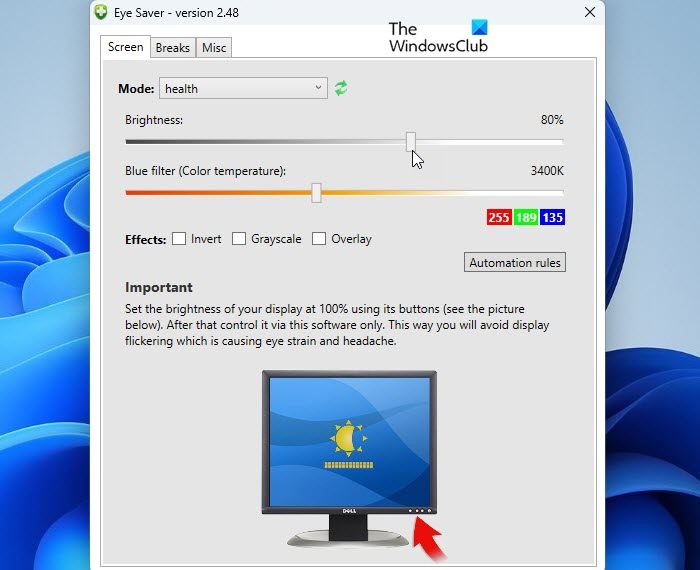
You may download Eye Saver using this link. After installing the software on your Windows 11/10 PC, you can use it to control the color settings of your monitor and reduce blue light emission. It also enables you to create rules to automatically switch between different screen modes when a particular application is running. Apart from this, it reminds you to move your sight away from the monitor at certain intervals and offers advice to maintain good health while working on the computer.
Read: SunsetScreen: Computer screen glare reduction freeware for Windows PC
3] ScreenTemperature
ScreenTemperature is another lightweight tool that helps change the color temperature of the screen on Windows 11/10 PC. It allows you to use Tanner Helland’s algorithm to automatically adjust the color temperature or use custom colors to set the tones that are suitable for your eyes.
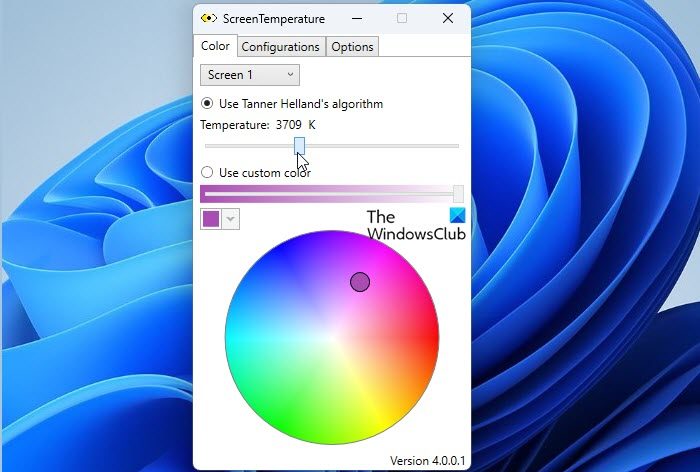
ScreenTempertaure offers multi-screen support and allows changing the color temperature of multiple screens connected to the same PC. Once installed, it sits silently in the system tray area until invoked manually. It gives the user the ability to create and save multiple color configurations and the possibility to change each screen color individually.
4] LightBulb
LightBulb is another freeware designed to reduce computer screen glare and adjust the color temperature of the screen on a Windows 11/10 PC. It constantly adjusts the gamma range to transition screen colors from cold blue in the afternoon to warm yellow during the night.
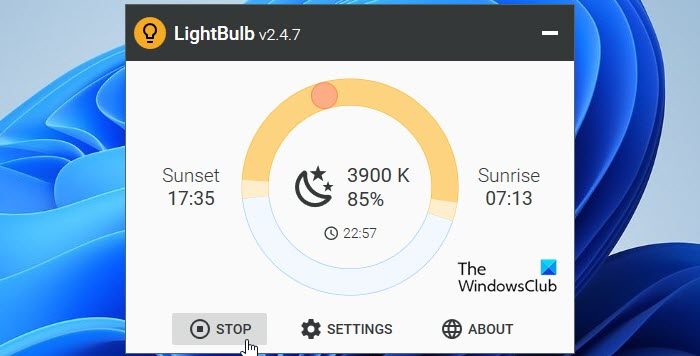
LightBulb requires .NET runtime component, Desktop v8.0.0 to function properly. Once installed, it prompts you to unlock the extended gamma range if it is already not enabled on your system. It then allows you to enter the solar configuration (sunrise and sunset hours) to be able to adjust daytime and nighttime color temperatures on your screen. It also allows you to modify the transition duration and see a brief animated preview of the 24-hour fluctuations in color temperature.
That’s all! I hope you find this useful.
Read: Fix Computer Monitor has a Yellow tint on screen.
Is night light on Windows better for your eyes?
Night Light is designed to reduce eye strain and discomfort caused by blue light exposure, especially in the evening and during the nighttime hours. Constant exposure to harmful blue light might cause visual problems and interfere with sleep cycles. Night Light reduces eye strain, enhances sleep quality, and promotes good eye health by lowering the quantity of blue light that computer screens generate.
Read: How to Dim or reduce brightness of laptop or computer monitor screen further
How do I keep my Windows night light on all the time?
Click on the Start button icon and select Settings. Go to System > Display > Night Light. Turn On the toggle next to the Schedule night light option. Select the Set hours option and use the Turn on and Turn off options to set a 24-hour schedule to keep the Night Light on all the time.
Read Next: Best Brightness Control Software for Windows.
Leave a Reply